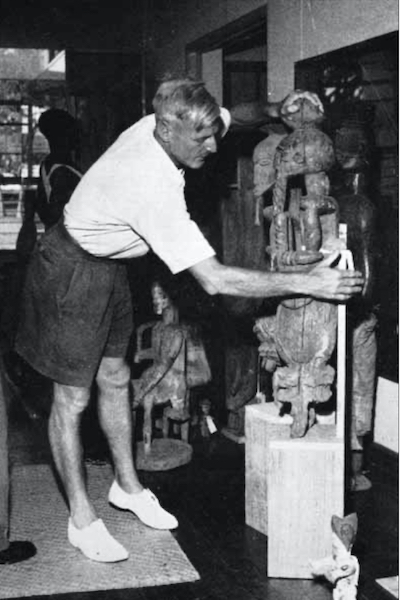Botched dreams
Ilojo Bar: A Chronicle of Ambitions and Unfulfilled Dreams

'Secret' and 'confidential' it reads on the letterhead of the Antiquities Department's correspondence in the 1950's concerning Ilojo Bar. At the time, Nigeria was still under British rule. And the British had taken up a liking of the building on Tinubu Square. So much so, that they were looking into buying it from the Olaiya family and turn it into a museum. The Director of the Department of Antiquities Bernard Fagg wrote that it 'Will make a most impressive and valuable museum of Old Lagos.' It should even play a role in the Independence Celebrations.
It might have been Bernard Fagg who introduced the misconception that Ilojo Bar was once built for an Afro-Brazilian formerly enslaved returnee: from this moment the correspondence of the Antiquities Department starts describing the provenance of the building as such.
The British were mostly interested in the front part of the structure facing Tinubu Square, and not the back part. That front was estimated at a value of £ 7,200, and its purchase was advocated by the Independency Celebrations Officer in 1959. That's where the paper trail ends, just before Nigeria's independence. The correspondence does not tell us whether the Olaiya's were approached with an offer, and we don't know why the plan never materialised. We do know however that the Anquities Department declared Ilojo Bar a National Monument in 1956, placing it under the care and protection of the Federal Antiquities Department.
The Antiquities Department was the predecessor of the National Commission for Museums and Monuments, that nowadays is in charge of these monuments. The NCMM has suffered a structural lack of funding for decades, and is struggling to even keep its own buildings in order. As a live-in monument, the Olaiyas were allowed to use the building and collect rent, but they could not just make adjustments to the building without the knowledge and consent of the NCMM. According to the NCMM, the building was acquired as a patrimony in 1984 and the family was compensated for this. But the Commission has not been able to show physical proof of this.
In 2005 then governor Bola Tinubu was approached by the Brazilian Ambassador to Nigeria Maria Auxiliadora Figueiredo about the preservation of the house that was quickly deteriorating. Figueiredo described it as 'he residence of the first Brazilian returnee, Pa Fernandez, in 1888.' She suggested a cooperation between Lagos State and Brazil to co-fund renovation. Tinubu's successor Babatunde Fashola even started talks with the Olaiya family about buying the property, but according to sources present at the meeting walked out in frustration because the financial demands were not realistic.
Financing remained the stumbling block. In 2012 the first step of an ambitious project to save Ilojo Bar was concretely taken. A detailed measurement of the building was done and an assessment of the cost of restoration made. Raising funds for the project however proved problematic and the ambitious plans fizzled out, leaving the structure to crumble away further. Meanwhile the owners were growing more and more frustrated with the monumental status of the building tying their hands and was looking for ways out.
